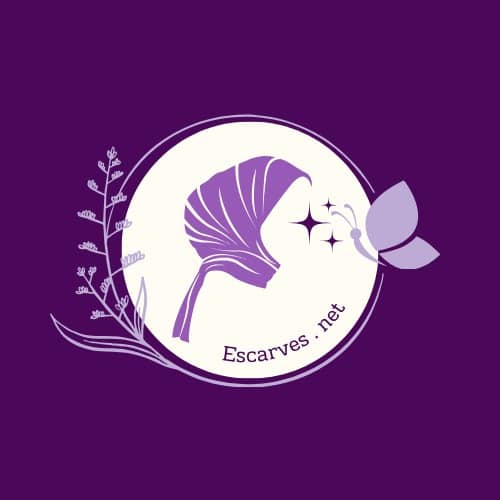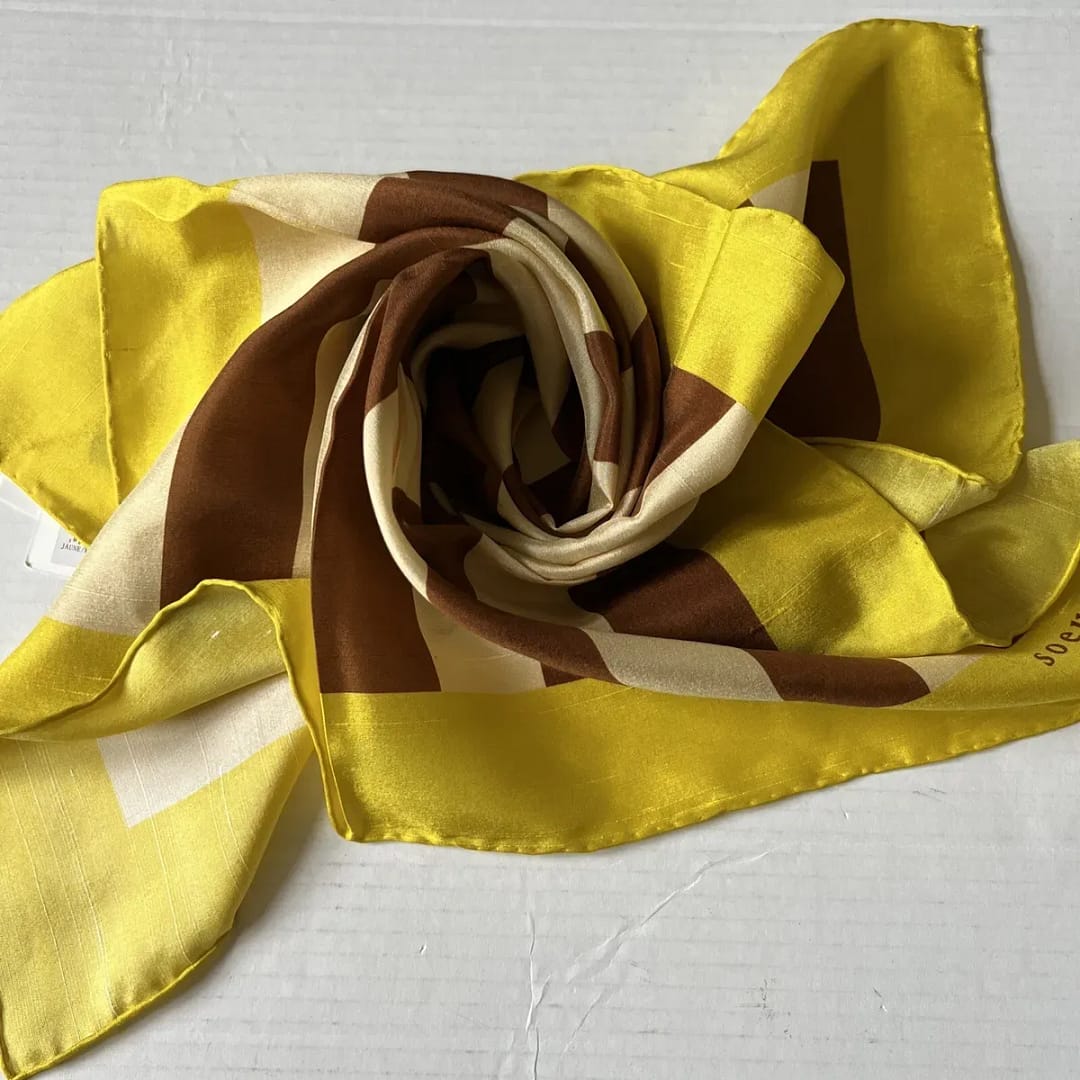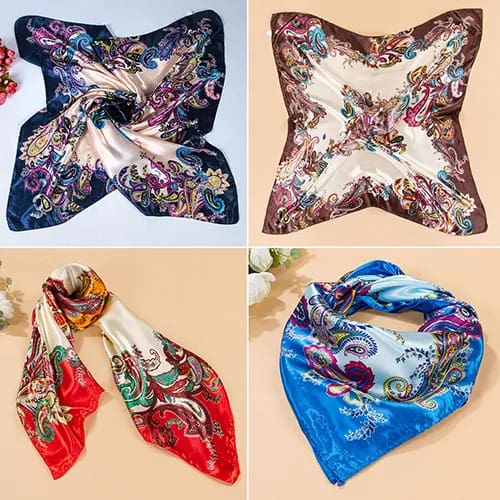With the winter chill creeping in, it’s time to layer up and look good while doing it. No winter wardrobe is complete without a stylish scarf, an often underrated yet crucial accessory for men. Not only do scarves add a touch of sophistication to any outfit, but they also provide the essential warmth to combat the cold. From luxurious cashmere pieces to the everyday wool option, the right scarf can pull together your whole look. In this extensive guide, we’ll explore the various types of men’s scarves, share expert styling tips, guide you on matching scarves to outfits, and even provide maintenance advice to keep your winter essential looking its best. Get ready to elevate your winter wardrobe with thoughtful touches and dapper details.
History of Men’s Scarves
The legacy of men’s scarves traces back thousands of years, with historical records indicating their use as early as Ancient Egypt. The earliest documented scarf was found in the tomb of Chinese Emperor Cheng, dating back to 260 BC, serving as a symbol of rank among military officers. However, it was during the 17th century that scarves evolved into a fashion statement among European men, particularly with the Croatian mercenaries who tied silk neckerchiefs as part of their uniform during the Thirty Years’ War. This fashion was quickly adopted by the French, evolving the accessory’s aesthetic appeal and solidifying its place in men’s fashion. Over the centuries, scarves have transitioned from purely functional items used for warmth and cleanliness to symbols of sophistication, status, and style in men’s wardrobe, mirroring the cultural and historical shifts throughout their evolution.
Types of Men’s Scarves
Understanding the different types of scarves ensures you select the right one for both style and occasion. Each material offers unique qualities in terms of warmth, comfort, and aesthetic. Here are some of the most common types:
Wool Scarves
Versatile and traditionally the go-to choice for winter, wool scarves offer excellent insulation and come in a range of thicknesses. They’re ideal for everyday wear and can be found in a variety of patterns and colors, making them easy to match with most winter ensembles.
Cashmere Scarves
The epitome of luxury, a cashmere scarf brings an unrivaled level of softness and warmth. They are the perfect accessory for formal events and provide a refined look that complements a tailored coat or suit jacket.
Silk Scarves
While not as insulating as wool or cashmere, silk scarves are an elegant choice, particularly for milder winter days. They add a touch of sophistication to a layered look and are often favored in warmer climates or for indoor wear.
Knit Scarves
Chunky knit scarves offer a casual and cozy aesthetic, perfect for weekends and days when comfort is a priority. These scarves often come in stylish textures and can be worn with both casual and semi-formal attire.
Ways to Style Men’s Scarves

The true charm of a scarf lies not just in its function but in how you wear it. Here are a few popular styles that will have you looking on-trend and feeling toasty.
Classic Drape
This is the most relaxed and fuss-free way to wear a scarf. Simply drape the scarf around your neck, with one end longer than the other, and tuck the longer end under the loop created by the shorter side. It’s casual but refined and works with most scarf lengths and fabrics.
The Parisian Knot
For a more structured look, fold the scarf in half and drape it around your neck. Pull the loose ends through the loop and adjust as necessary. This method is perfect for adding a tailored touch to your outfit.
The Once Around
Take the scarf and drape it around your neck, letting one end hang longer. Wrap the long end around your neck once before bringing it across the front. This style is great for keeping the chill out and works especially well with longer scarves.
The Reverse Drape Tuck
Similar to the classic drape, simply throw one end of the scarf across your opposite shoulder after looping it around your neck. Tuck the end under the loop around your neck for a secure and stylish look.
Seasonal Scarf Styles
Adapting your scarf selection and styling techniques to the season can elevate your outfit while ensuring comfort and functionality. Here’s how you can vary your scarf game as the year progresses:
Winter Wonders
For the ultimate defense against the cold, opt for heavier wool or cashmere scarves. Rich, deep colors like burgundy, navy, and dark green add warmth to your winter wardrobe. Plaid and striped patterns integrate a classic touch, while solid colors maintain simplicity and elegance.
Spring Sophistication
As the weather begins to warm, transition to lighter wool or silk scarves. Spring calls for pastel colors and floral patterns, adding a fresh pop to your outfit. A loosely draped silk scarf can complement a lightweight blazer, perfect for those brisk spring mornings.
Summer Breezes
While scarves are not commonly associated with summer, a lightweight linen scarf can protect against the summer sun without overheating. Opt for vibrant colors or nautical stripes to pair with summer wear, offering a stylish solution for summer evenings by the beach or outdoor dining.
Autumn Accents
Autumn is the time to play with textures and layers. Transitional weather makes mixed materials like cotton-wool blends ideal. Earthy tones such as burnt orange, mustard yellow, and olive green reflect the changing leaves and complement the season’s palette. Chunky knit scarves introduce a cozy element to your ensemble, perfect for those crisp fall days.
By thoughtfully selecting your scarves according to the season, not only do you maintain comfort and warmth, but you also keep your style sharp and appropriate year-round.
Celebrity Men’s Scarf Trends
Celebrity fashion often sets the stage for what’s in vogue, and when it comes to men’s scarves, it’s no different. Icons from film, music, and sports have been spotted sporting various scarf styles, influencing trends and how everyday men approach this accessory. Celebrities like David Beckham and Ryan Gosling have mastered the art of incorporating scarves, not just for warmth but as a significant element of their style statement. Beckham, known for his impeccable fashion sense, frequently opts for chunky knit scarves worn in a loose loop, embodying a relaxed yet polished look. On the other hand, Ryan Gosling is often seen in more structured scarf styles, such as the Parisian knot, leaning towards a classic and refined appearance. Additionally, actors like Johnny Depp and Idris Elba showcase how versatile scarves can be, often experimenting with bold patterns and textures, showing that men’s scarves can indeed be a focal point of fashion-forward attire. These trends set by celebrities confirm that scarves are a versatile and essential accessory, capable of elevating a man’s wardrobe across seasons.

DIY Men’s Scarf Projects
For those who enjoy the satisfaction of creating something with their own hands, DIY scarf projects offer a wonderful opportunity to tailor your accessory game to your personal style. Here are a few DIY scarf ideas to get you started:
Hand-Knitted Scarves
Knitting your own scarf allows for complete customization of color, texture, and length. Begin with a simple pattern and choose yarn that speaks to your taste — be it a bold, multicolored option or a more subdued, classic wool. There are numerous online tutorials for beginners, making it easy to learn basic stitches and techniques.
Upcycled Scarves
Transform an old sweater or blanket into a cozy, unique scarf. This project not only gives new life to unused textiles but also adds an eco-friendly element to your wardrobe. Look for materials with interesting textures or patterns, and experiment with adding fringe or other embellishments for a personalized touch.
Hand-Painted Silk Scarves
For a more artistic endeavor, try hand-painting a silk scarf. This project can be as simple or intricate as you make it, allowing for full creative expression. Silk painting kits are available and come with all you need to get started, including dyes and resist to outline your designs. Whether opting for abstract designs or more detailed scenes, the result is a one-of-a-kind statement piece.
Ethical and Sustainable Scarf Options
In an era where environmental consciousness and ethical consumerism are more important than ever, opting for sustainable and ethically produced scarves is a choice that not only impacts your wardrobe but the planet as well. Sustainable scarves are typically made from organic materials such as bamboo, hemp, organic cotton, or recycled fabrics, minimizing the environmental footprint. Furthermore, ethical scarves often come from fair trade sources, ensuring that artisans and workers are paid fairly and work in safe conditions. Brands committed to these practices often use natural dyes, reducing harmful chemicals entering our ecosystems. By choosing ethical and sustainable scarf options, you not only enrich your style with unique and meaningful pieces but also support a healthier planet and ethical labor practices.
Scarves for Different Occasions
Choosing the right scarf for various occasions can significantly enhance your look, making it more appropriate and polished. Whether you’re attending a formal event, a casual outing, or anything in between, there’s a scarf that fits the bill:
Formal Events
For formal occasions like weddings or corporate events, silk or fine wool scarves exude elegance and sophistication. Opt for solid colors or subtle patterns that complement your suit or tuxedo. The drape or classic knot styles work beautifully in these settings, adding a refined touch without overwhelming your overall attire.
Casual Gatherings
Casual meet-ups call for a relaxed approach. Cotton, linen, or lightweight wool scarves are perfect for adding personality to your outfit. Feel free to experiment with bold colors, eclectic patterns, and playful textures. A simple toss or loop tie keeps the look effortless and stylish.
Outdoor Adventures
When heading outdoors for hiking or a casual walk in the park, durability and comfort take precedence. Choose a scarf made from sturdy, insulating materials like thick wool or fleece. Bright colors or patterns can add a fun element to your outdoor gear, and a snug wrap or loop ensures warmth and functionality.
Business Casual
For those days that blur the lines between formal and casual, a finely knit wool or cashmere scarf in muted colors works well. The look should be understated yet classy, complementing blazers and button-downs. A loose wrap adds a touch of sophistication without being too formal.
Artistic or Cultural Events
Attending a gallery opening or a theater performance? This is your chance to showcase your unique style. A silk or hand-painted scarf can serve as a statement piece, expressing your artistic flair. Choose designs that speak to your personality and pair them with a simple knot, letting the scarf take center stage.
By selecting scarves appropriate for the occasion, not only do you elevate your look, but you also express your personal style and attention to detail.
Choosing the Right Scarf for Your Outfit
A scarf should complement your outfit, not overshadow it. Here are a few considerations to keep in mind:
Matching Colors and Patterns
Coordinate your scarf with the rest of your clothing by choosing similar or complementary colors. Pay attention to the scale of the patterns – a smaller check or stripe in your scarf can play well against a larger pattern on your coat.
Considering Fabric and Warmth
The choice of material should align with your needs. Wool and cashmere provide the most warmth, making them a solid choice for colder climates. If you tend to overheat or live in a more temperate area, a silk option can be more comfortable.
Coordinating with Outerwear
Your scarf should work with your coat, not against it. A shorter, bulkier scarf complements a pea coat, while a thinner, longer scarf works well with a trench coat.
Caring for Men’s Scarves

Proper care of your scarves not only maintains their appearance but also extends their lifespan. Here are essential tips on ensuring your scarves remain in pristine condition:
- Washing Guidelines: Always follow the manufacturer’s instructions. Most wool and cashmere scarves require hand washing in cold water with a mild detergent. Silk scarves are usually best dry-cleaned to preserve their texture and color vibrancy.
- Drying: Avoid wringing out your scarves, as this can damage the fibers. For wool or cashmere, gently press out the water and lay flat on a towel to dry. Silk scarves should be air-dried away from direct sunlight.
- Storing: To prevent wrinkles and stretching, store your scarves folded in a drawer. Silk scarves can be rolled to avoid crease lines. During the off-season, consider using breathable garment bags to ward off moths and dust.
- Ironing: Use a low heat setting for wool and cashure, and always place a cloth between the iron and the scarf to prevent direct contact. Silk scarves may require a slightly higher heat setting but must always be ironed on the reverse side to avoid shine marks.
By adhering to these care instructions, your scarves will stay soft, vibrant, and ready to complement your wardrobe for years to come.
Conclusion
In the world of fashion, scarves are more than just a piece of cloth; they are an expression of style, a mark of sophistication, and a testament to ethical and sustainable living choices. By carefully selecting scarves that are both suitable for various occasions and aligned with personal values, individuals can not only enhance their wardrobe but also make a positive impact on the planet and its communities. Whether it’s the elegance required for formal events, the casual flair for everyday wear, or the rugged durability for outdoor adventures, the right scarf can elevate any outfit. Furthermore, understanding how to match, care for, and store these accessories ensures they remain a cherished part of your attire for years to come. Scarves, therefore, occupy a unique place in fashion, combining utility with a statement of personal ethics and style.







